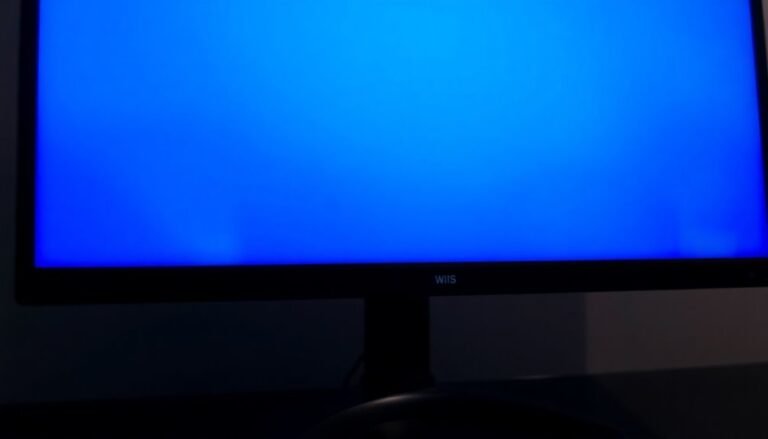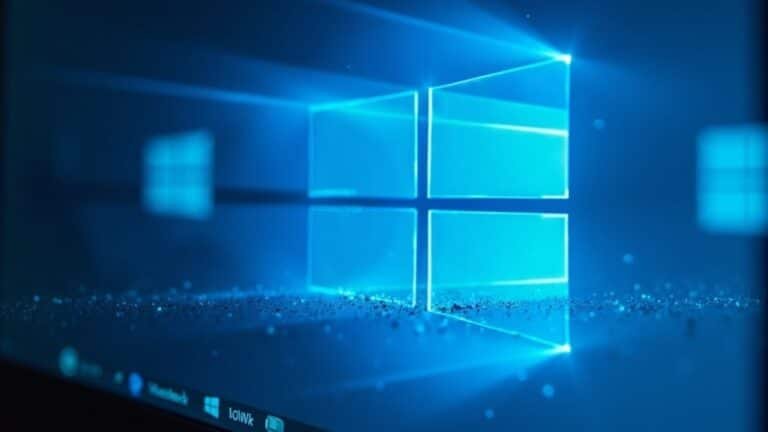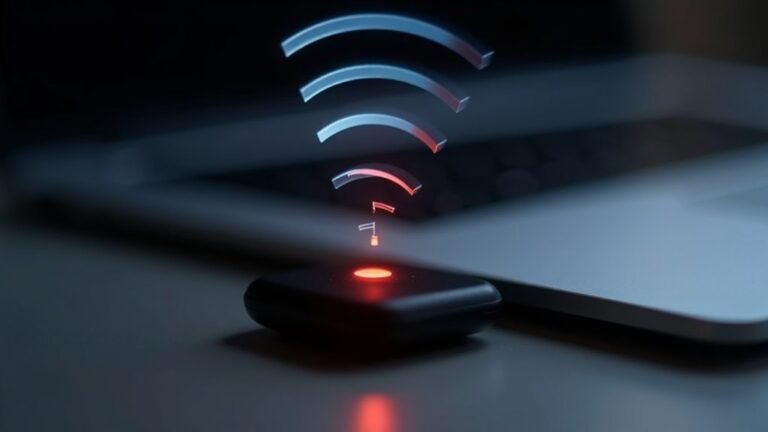Windows 11 Slow Printing: Fix Printer Performance Issues

If Windows 11 updates have slowed your printer, start by updating your printer drivers and firmware from the manufacturer’s website. Avoid relying solely on Windows Update for these updates.
Next, restart or clear the print spooler to fix stalled print jobs. Adjust print settings to “Draft” or “Normal” for faster output.
Ensure your printer is connected to a high-speed network. Also, remove any unused devices from “Printers & scanners.”
Still having trouble? Discover advanced troubleshooting and optimization steps next.
Understanding the Impact of Windows 11 Updates on Printer Performance
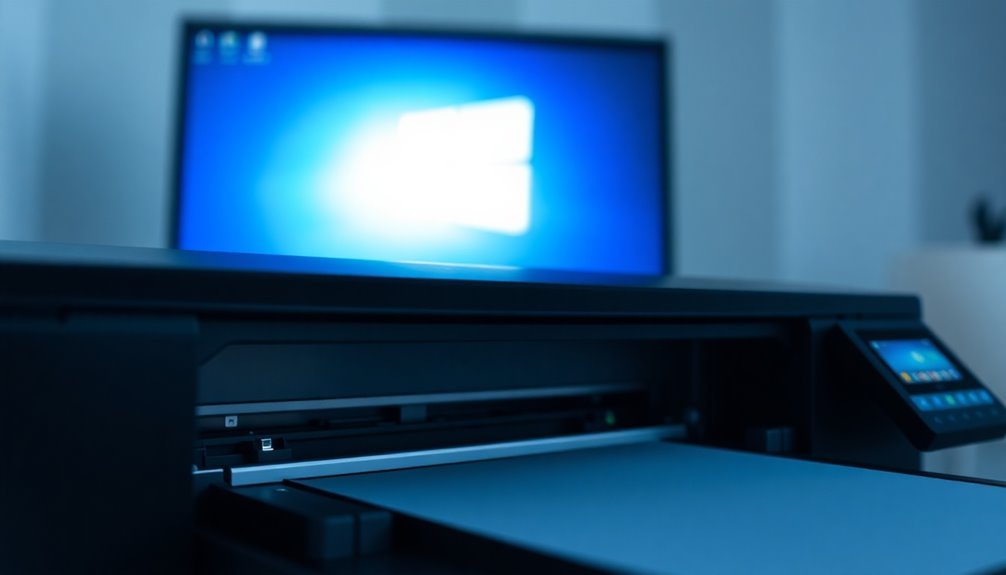
Windows 11 Update Printer Issues: How Windows Protected Print Mode and 24H2 Affect Printer Performance
If you’ve recently upgraded to the latest Windows 11 builds, including the Windows Protected Print Mode (WPP) or the 24H2 update, you may be experiencing significant printer performance problems.
WPP replaces traditional manufacturer-specific drivers with a default Windows driver, which can remove advanced printer features such as duplex printing and stapling on up to 70% of compatible printers. Users with Canon, HP, or Xerox printers often face compatibility issues, losing essential functions like scanning and finishing options.
The Windows 11 24H2 update has introduced additional challenges, including random printer disconnections, persistent driver errors, and slower print speeds—even when using Microsoft’s Universal Print Driver. In some environments, an estimated 30% of printers may become non-functional under these changes, leaving businesses and users without reliable printing options.
Many users report the “Print to PDF” option disappearing, particularly after installing the June 2025 security updates. Attempts to reinstall printer drivers frequently fail with error code 0x800f0922, frustrating workflow continuity.
Microsoft acknowledges these Windows 11 printer driver issues and currently provides only temporary workarounds.
To minimize disruptions, it’s crucial to monitor Windows updates closely and stay informed about driver changes. For businesses and individuals relying on reliable printing, understanding how Windows 11 updates impact printer performance can help you prepare and adapt effectively.
Stay updated to resolve Windows 11 printer problems and optimize your printing experience.
Resolving Print Spooler Service Delays
How to Fix Print Spooler Service Delays in Windows 11: Step-by-Step Guide
Print spooler service delays are a common issue in Windows 11 that can disrupt your printing workflow by causing print jobs to get stuck or printers to remain idle. Outdated or incompatible printer drivers can also contribute to print spooler problems and slow printing performance.
If you’re experiencing print spooler problems, follow this comprehensive troubleshooting guide to quickly resolve print queue jams and restore smooth printing operations.
Step 1: Restart the Print Spooler Service
The first and easiest fix is to restart the print spooler service:
- Press `Win + R`, type `services.msc`, and hit Enter.
- Scroll down and locate Print Spooler.
- Right-click it and select Restart.
Restarting the spooler often clears temporary glitches causing delays.
Step 2: Clear the Print Queue Manually
If restarting doesn’t help, clear stuck print jobs:
- Open Settings > Devices > Printers & Scanners.
- Select your printer and click Open queue.
- Cancel all pending print jobs.
Step 3: Delete Print Spooler Files
For persistent issues, manually delete spooler files:
1. Open an elevated Command Prompt (run as administrator).
2. Run the commands:
“`
net stop spooler
del %systemroot%System32spoolPRINTERS* /Q
net start spooler
“`
3. Avoid deleting subfolders to prevent system instability.
Step 4: Remove Phantom Drivers and Queues
Leftover drivers and print queues can cause delays:
- Open Device Manager and uninstall unused or phantom printers.
- Clean up related registry entries by navigating to:
“`
HKEY_CURRENT_USERPrinter_Connections
“`
Use caution when editing the registry.
Step 5: Monitor Print Spooler Status and Logs
After troubleshooting, verify print spooler stability:
- Check the spooler status in Services.
- Review Event Viewer logs under Windows Logs > System for spooler-related errors.
By following these optimized steps, you can efficiently resolve print spooler service delays in Windows 11, ensuring uninterrupted printing performance.
For more expert tips on managing Windows devices and troubleshooting common issues, bookmark our blog and stay updated.
Updating and Maintaining Printer Drivers and Firmware
How to Update and Maintain Printer Drivers and Firmware for Optimal Printing Performance
Restarting the print spooler can fix many immediate printing problems, but to ensure consistent high-quality print performance, it’s essential to keep your printer drivers and firmware up to date.
Outdated printer drivers are a common cause of slow printing, errors, and communication issues between your PC and printer—especially after Windows 11 updates. Printer manufacturers regularly release new driver and firmware updates to improve compatibility, fix bugs, and enhance overall performance.
Follow these expert tips to update your printer drivers and firmware effectively:
- Use Windows Update for Driver Updates: Regularly check Windows Update in your Settings to find and install recommended printer driver updates. This ensures compatibility and security with the latest Windows 11 features.
- Update Drivers Manually via Device Manager: Open Device Manager, locate your printer under “Printers,” right-click it, and select “Update driver” to search for the latest drivers.
- Download Drivers Directly from Manufacturer Websites: Visit your printer manufacturer’s official support site to download the latest drivers. Make sure to select the exact printer model and Windows 11 operating system version for the best results.
- Check and Install Firmware Updates: Firmware updates can significantly enhance printer functionality. Visit your printer’s support page to download the latest firmware and follow the manufacturer’s precise installation instructions.
Before updating, always back up your current printer drivers and settings.
After installing new drivers or firmware, restart your computer to ensure smooth printer communication and optimal printing performance.
By regularly updating your printer drivers and firmware, you can prevent printing errors, improve print speed, and maintain seamless connectivity between your Windows 11 PC and printer.
Stay ahead with these printer maintenance best practices!
Optimizing Print Settings for Faster Output
Optimize your print settings for faster output and reduce delays with these expert tips.
Lower your print quality from “High” to “Draft” or “Normal” to speed up printing and save ink by reducing the data processed by your printer. Disable features like color optimization and duplex printing to enhance print speed. Adjust the print resolution (DPI) to a lower setting for everyday documents to further boost performance.
Ensure your print dialog matches the actual paper type and size loaded in your printer, and avoid using specialty or heavily textured media to prevent slowdowns.
Configure the print spooler to “Start printing immediately” and process smaller data packets to minimize bottlenecks. Regularly clear your print queue to avoid backlogs and maintain smooth printing operations.
Use your printer driver or manufacturer’s app to set defaults for speed, enabling “Quick Print” modes and bypassing Windows 11’s print overlay when possible.
Simplify your documents by reducing high-resolution images, selecting standard paper sizes, and splitting large print jobs for faster, more efficient printing.
Follow these print optimization strategies to improve your printing speed and productivity.
Addressing Network and Connectivity Issues
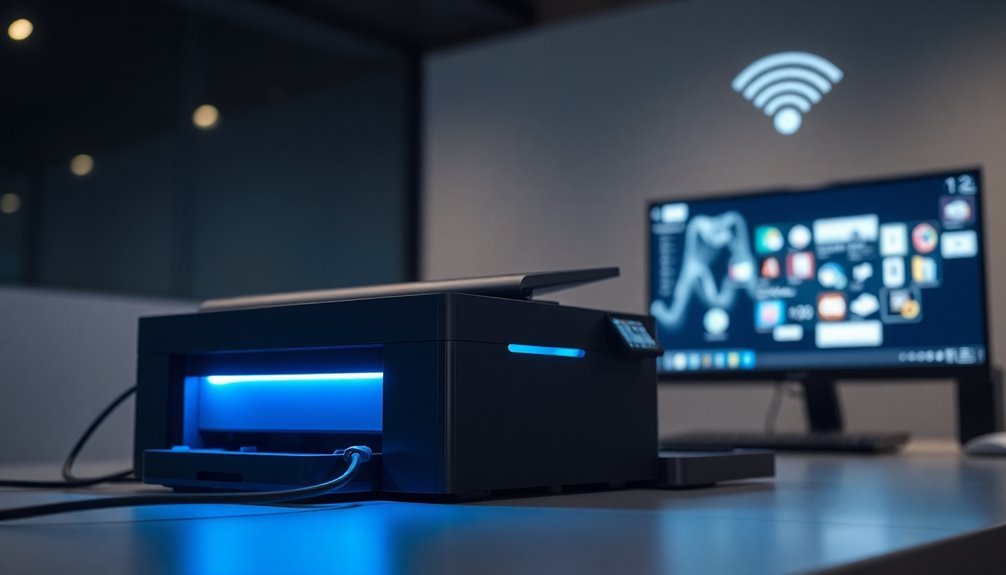
Troubleshooting Printer Offline and Slow Printing Issues in Windows 11
If your printer is slow or shows as offline in Windows 11, network and connectivity problems are often the main cause. To fix printing issues and ensure fast, reliable performance, follow these essential steps to check your setup.
1. Confirm Both Devices Are on the Same Wi-Fi Network
Make sure your Windows 11 PC and your printer are connected to the same Wi-Fi network (SSID). Different networks prevent communication between your devices.
2. Check Printer Wi-Fi Settings and Frequency Band
Verify that your printer’s Wi-Fi is enabled via its control panel. Also, ensure it’s connected to the 2.4 GHz Wi-Fi band, as most printers don’t support 5 GHz networks.
3. Set Windows 11 Network Profile to Private
Windows 11 network settings affect device visibility. Change your network profile from Public to Private to enable printer discovery and sharing.
4. Enable Printer Sharing and Configure Firewall Rules
Printer sharing must be turned on in Windows 11. Additionally, adjust firewall settings to allow printer connections and avoid blocked communication.
5. Restart Network Devices
Power cycle your router, printer, and PC to clear temporary network errors and refresh connections.
By following these troubleshooting tips, you can resolve common printer offline and slow printing problems in Windows 11, improving your printing experience and productivity.
For more Windows 11 printer support, explore additional network and device settings to optimize performance.
Using Diagnostic Tools to Identify and Fix Printing Problems
How to Use Diagnostic Tools to Identify and Fix Printing Problems in Windows 11
If you’re experiencing persistent printer issues in Windows 11, using diagnostic tools can help you quickly identify and resolve the problem. Start by running the built-in Windows 11 printer troubleshooter through the Get Help app. This automated tool scans for common printer problems such as offline status, driver conflicts, and connection errors, then applies fixes automatically to get your printer working again.
If the Windows 11 printer troubleshooter doesn’t fix the issue, try using your printer manufacturer’s diagnostic utilities. For example, HP Print and Scan Doctor is a helpful tool that detects device-specific problems, checks driver compatibility, and guides you through firmware updates to ensure full support on Windows 11.
Another important step is to check the print spooler service. Open Services by typing services.msc in the Windows search bar, then locate “Print Spooler” and restart it to clear any stuck print jobs.
You can also delete files from the folder located at %WINDIR%system32spoolPRINTERS to remove stuck print jobs manually. Make sure the Print Spooler service is set to start automatically to avoid future printing issues.
For more detailed troubleshooting, review the Event Viewer logs by navigating to “PrintService” under Windows Logs. These logs provide detailed error messages that can help diagnose slow or failed printing problems.
Reinstalling and Resetting Printers After Windows 11 Upgrades
How to Reset and Reinstall Printers After Upgrading to Windows 11
If you’re experiencing printer issues after upgrading to Windows 11, follow these easy steps to reset and reinstall your printer for optimal performance:
1. Remove Existing Printer Drivers and Devices: Go to Settings > Devices > Printers & scanners, select your printer, and remove it.
Then, uninstall any related printer drivers via Device Manager or Print Management.
2. Factory Reset Your Printer Hardware: Use your printer’s onboard control panel to perform a factory reset.
Refer to your printer model’s user manual for detailed instructions.
3. Download the Latest Windows 11-Compatible Drivers: Visit the official website of your printer manufacturer and download the latest drivers specifically designed for Windows 11 to ensure full compatibility.
4. Reconnect and Set Your Printer as Default: After reinstalling the drivers, reconnect your printer to your PC.
Then, go to Settings > Devices > Printers & scanners and set your printer as the default device.
Following this step-by-step guide will help you quickly resolve most printer problems caused by Windows 11 upgrades, ensuring your printing tasks run smoothly.
For more Windows 11 printer troubleshooting tips, visit our website regularly.
Frequently Asked Questions
Can Specific Printer Brands Experience More Issues With Windows 11 Than Others?
Yes, you’ll notice some printer brands face more Windows 11 issues, especially with older or discontinued models lacking updated drivers. Always check your manufacturer’s driver support. If issues persist, install universal drivers or use brand diagnostic tools for troubleshooting.
How Does Windows 11 Printing Performance Compare to Windows 10?
You might expect dramatic speed changes, but Windows 11’s printing performance closely matches Windows 10. Focus on updating your drivers and firmware—these impact print speed and reliability far more than the operating system version itself.
Will Using Third-Party Print Management Software Affect Print Speed?
Using third-party print management software can affect your print speed. If Windows disables or limits it for security, you’ll lose print job optimizations. You’ll likely notice slower processing, especially if you relied on software-specific drivers or advanced features.
Are There Privacy Concerns With Windows 11 Printer Data Handling?
Yes, you should watch for privacy risks with Windows 11 printer data handling. Printers can store cached jobs and credentials, and unsecured print queues or outdated firmware can expose sensitive data. Always secure devices, update firmware, and use authentication.
How Do Virtual Printers Behave Under Windows 11 Updates?
You’ll notice virtual printers may fail to generate spool files or complete print jobs after Windows 11 updates. Check for missing .SPL files, reinstall universal drivers, and verify spooler services to restore reliable virtual printer functionality.
Conclusion
If Windows 11’s printing feels like wading through molasses, don’t let slowdowns jam your workflow. By tuning drivers, clearing spooler hiccups, and optimizing settings, you’ll turn your printer from a sluggish tortoise into a nimble hare. Stay vigilant with updates and network checks—your printer’s performance depends on it. When all else fails, a quick reset or reinstall can clear the fog. Take these steps, and your print jobs will zip through in no time.
